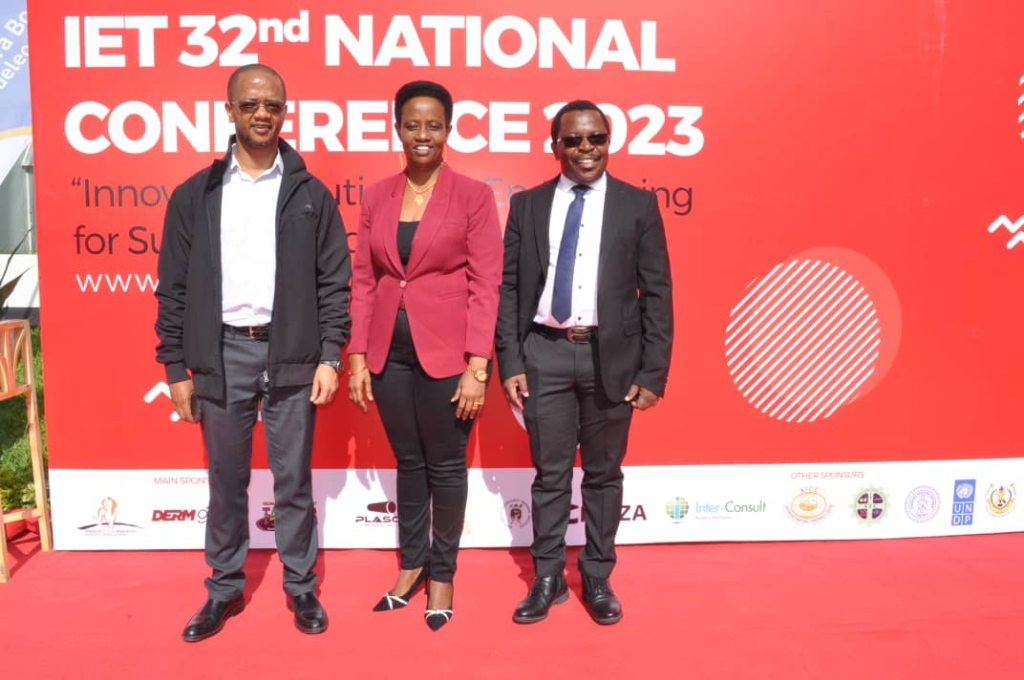
By Maida Waziri, in commemoration of THE INSTITUTION OF ENGINEERS TANZANIA 32ND NATIONAL CONFERENCE & EXHIBITIONS.
Today let us talk about a matter of great importance – empowering and developing the engineering-driven SMEs in Tanzania.
Section 1: The Vibrant Landscape of Engineering SMEs in Tanzania
In Tanzania, we are fortunate to have world-class engineers capable of participating in projects globally. Their work often sets quality standards and inspires. The engineering SME sector in our nation is like a vibrant ecosystem of high-tech success intertwined with practical skills, creativity, and resilience. This sector is a melting pot of talent and expertise, ranging from skilled engineers and industrial manufacturers to artisans crafting complex machinery. Many of these skilled individuals, often without formal education, possess a deep understanding and innate ability in engineering principles. They are the unsung heroes behind our economy, quietly pushing our progress forward.
Consider our welders, for instance. These skilled craftsmen are crucial in sectors from manufacturing to construction. Their work, going beyond ordinary trade, becomes an art, shaping the very infrastructure of our nation. Their expertise in metal handling supports various industries, significantly contributing to our national growth.
Likewise, those creating industries and machinery are a testament to innovation and problem-solving ability. Often self-taught or through hands-on experience, they bring critical improvements in sectors like agriculture and manufacturing, enhancing efficiency and productivity.
Among these ranks, we also find technical marvels and entrepreneurs who have carved out successful niches, challenging the notion that formal education is the only path to success in engineering. Their businesses, encompassing renewable energy, manufacturing, construction, and more, are not just enterprises – they are hubs of innovation, showcasing the indomitable spirit and creativity of Tanzania.
In renewable energy, these SMEs are trailblazers, leading the way towards sustainability. Their projects, ranging from solar panel installations to wind and hydro projects, utilize Tanzania’s natural resources in environmentally friendly and economically beneficial ways.
In manufacturing, construction, and building sectors, these SMEs are at the forefront, not just responding to market demands but also anticipating and shaping future needs. Their work in these areas demonstrates their adaptability, agility, and forward-thinking approach.
These SMEs, led by both formally trained professionals and self-taught experts, embody the essence of Tanzanian innovation. They remind us that great ideas and achievements often emerge from unexpected sources and unconventional paths. They represent our nation’s talent pool, emphasizing the importance of nurturing and supporting all forms of skill and expertise in the engineering sector.
As we celebrate their successes, it is crucial to bolster our support for them through appropriate policies, strategic investments, and public recognition. Their achievements are not theirs alone; they are collective victories uplifting our entire nation, propelling us towards a more prosperous, sustainable, and innovative future.
Section 2: Navigating Opportunities and Addressing Challenges (5 Minutes)
The journey of engineering SMEs is like a complex tapestry woven with great opportunities and significant challenges. In this era dominated by digital transformation and global shifts towards sustainable engineering practices, these companies stand at the threshold of revolutionary progress. Yet, simultaneously, they face numerous challenges, from resource constraints and technical skill shortages to difficulties in accessing broader markets.
Opportunities in the Digital and Sustainable Engineering Landscape
Digital Transformation: The digital revolution presents numerous opportunities for SMEs in the engineering sector. Technologies like IoT (Internet of Things), AI (Artificial Intelligence), and cloud computing are not just buzzwords but gateways to operational efficiency, enhanced data analytics, and improved customer engagement. By embracing these technologies, engineering SMEs can optimize their processes, reduce costs, and offer more innovative solutions.
Sustainable Practices: With the world’s emphasis on sustainability, there is a growing demand for environmentally friendly and energy-efficient solutions. This trend opens doors for SMEs specializing in renewable energy, green building practices, and sustainable manufacturing processes. Aligning with these practices, SMEs can tap into new markets, meet evolving regulatory standards, and contribute positively to environmental conservation.
Challenges Faced by Engineering SMEs
Resource Limitations: One of the most significant challenges is the limited availability of financial and human resources. Many SMEs struggle to secure adequate funding for research and development or expansion activities. Additionally, a shortage of skilled labor, particularly in modern technology areas, is a major barrier.
Technical Skill Gap: The rapid pace of technological advancement often leaves a gap in required skills. Keeping up with the latest engineering and technology trends requires continuous learning and adaptation. SMEs sometimes find it challenging to invest in ongoing training and development of their workforce, which is essential for maintaining competitiveness.
Market Access: For many engineering SMEs, accessing larger, domestic, and international markets remains a significant challenge. This barrier limits their ability to grow and expand their operations. Factors like stringent regulations, intense competition, and lack of market knowledge can hinder their market expansion efforts.
Creating a Support Framework
To navigate these challenges, it’s essential to establish a support framework that fosters innovation and sustainability in the engineering sector. This involves various stakeholders, including governments, educational institutions, industry leaders, and financial institutions, collaborating to create a conducive environment for SMEs.
Policy and Regulatory Support: Governments can play a pivotal role by enacting policies that encourage innovation and investment in the engineering sector. This could include tax incentives for research and development, streamlined regulatory processes, and support for sustainable practices.
Financial Access: Financial institutions can offer customized financial products that meet the specific needs of engineering SMEs, such as grants for innovation, low-interest loans for expansion, and venture capital for high-risk, high-reward projects.
Skill Development and Training: Educational institutions and industry associations must work together to bridge the skill gap. This can be achieved through specialized training programs, vocational skills, and partnerships focused on equipping workers with the latest technology and engineering skills.
Market Access and Networking: Creating networking platforms, trade shows, and collaborations can help SMEs gain better market access. Partnerships with larger companies, participation in international engineering networks, and digital marketing strategies are crucial in expanding their reach.
Section 3: Charting a Plan for Success
Elevating our engineering talent to new heights requires a comprehensive, multi-faceted strategy. To achieve this, we must focus on strengthening technical education, providing easier access to capital, and establishing robust industrial collaborations. Furthermore, advocating for policies that enable SMEs to adopt modern technologies and sustainable practices is crucial. This approach is not just about expanding businesses; it’s about creating an engineering landscape that is enduring, innovative, and globally competitive.
Strengthening Technical Education and Workforce Development
Specialized Technical Training: Developing specialized training programs that meet the evolving needs of the engineering sector is crucial. These programs should focus on emerging technologies, sustainable engineering practices, and additional skills like project management and entrepreneurship.
Industry-Academia Collaboration: Strong partnerships between educational institutions and industry players can lead to curriculum improvements, hands-on training, and real-project experience for students. This collaboration ensures that the workforce is not only academically robust but also industry-ready.
Lifelong Learning and Self-Improvement: Establishing platforms for continuous learning and self-improvement is vital. Workshops, online courses, and certification programs can help current professionals stay informed about technological advancements and industry trends.
Facilitating Access to Capital
Financial Incentives and Support Programs: Governments and financial institutions can introduce incentives like tax breaks, grants, and low-interest loans specifically targeted at engineering SMEs. This financial aid can help cover the costs of technological upgrades, expansion, and research and development activities.
Entrepreneurial Capital and Angel Investment: Encouraging venture capital firms and angel investors to invest in engineering SMEs can provide the needed impetus for innovation and growth. This investment is particularly crucial for startups and companies working with cutting-edge technologies.
Crowdfunding and Alternative Financing: Exploring public funding platforms and alternative financing methods can offer a range of funding opportunities, especially for unconventional and innovative engineering projects.
Building Robust Industrial Collaborations
Networking and Partnerships: Creating networks that connect SMEs with large organizations, government agencies, and international partners can open up opportunities for collaboration, joint ventures, and knowledge sharing.
Supply Chain Integration: Integrating SMEs into national and international supply chains can enhance their market access and operational efficiency. This requires building relationships with key industry players and understanding market needs.
Industry Clusters and Innovation Hubs: Establishing industry clusters and innovation hubs can foster a collaborative environment where businesses, researchers, and entrepreneurs can come together and innovate. These hubs can serve as incubators for new ideas and technologies.
Advocating Supportive Policies
Regulatory Framework and Compliance Assistance: Simplifying regulatory processes and providing compliance assistance can significantly reduce the administrative burden on SMEs. This includes streamlining licensing procedures, import-export regulations, and environmental compliance.
Encouraging Sustainable Practices: Policies that encourage the adoption of green technologies and sustainable practices can propel SMEs towards environmentally friendly practices. This includes grants for renewable energy use, waste reduction programs, and sustainability certifications.
Embracing Digital Technologies: Promoting the adoption of digital technologies through grants, training programs, and technical support can help SMEs keep pace with the digital revolution.
Conclusion and Call to Action
As we conclude our discussion, it’s clear that the engineering SME sector in Tanzania stands at a critical crossroads. The decisions and actions we take today are not just footnotes in our nation’s history; they are the very script that will direct our technological and economic future. The path we choose now will either elevate our nation to new levels of innovation and prosperity or leave us lagging behind global progress.
In this pivotal period, the call to action carries a sense of urgency and collective responsibility. I urge every stakeholder, from government leaders to industry professionals, academics to investors, to support our engineering SMEs.
Maida Waziri, is the CEO at IBRA AFRICA

